
What is Limited Slip Differential ?
Consider a situation where a car with a standard differential moves straight. During this route, one of the wheels is on the asphalt or smooth surface, but the other wheel is on the slippery surface.
In a standard differential, the rotation of the left and right axis is completely separate. Since each wheel is independent, the rotating wheel on the slippery surface starts rotating at a high speed due to the lack of friction, and the other wheel that is on the normal surface moves at a much lower speed or remains almost stationary.
In this situation, the power transferred from the engine to the differential is not divided equally. Most of the power is delivered to the wheel on the slippery surface and the other wheel receives almost no power.
In this case, the car will not be able to move. In fact, the limited slip differential is a way to prevent this complete independence of the wheels and the unbalanced distribution of power between the left and right wheels.
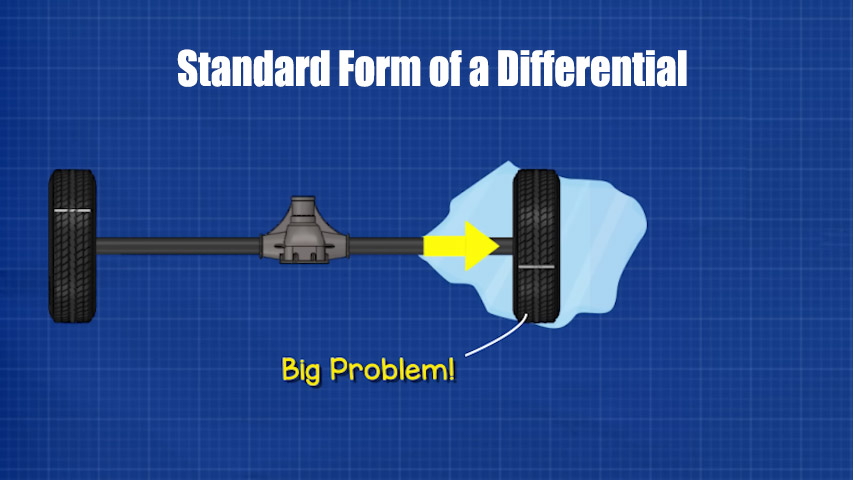
Limited Slip Differential , How it works ?
Limited slip differentials prevent power imbalance in different ways. But one of the most common methods for limited slip differentials is to use a set of clutches. In order to check how it works, its structural features should be checked.
As mentioned, the limited slip differential includes a set of clutches and steel plates. These components are placed between the Ring Gear and the Casing. The Clutch plate is engaged with the gear wheel. This conflict makes the gears (Side Gear) and Friction Discs (Ring Gear) always move together.
Steel tongues have grooves that are placed in the grooves of the Casing. This overlap causes them to rotate together with the Casing.
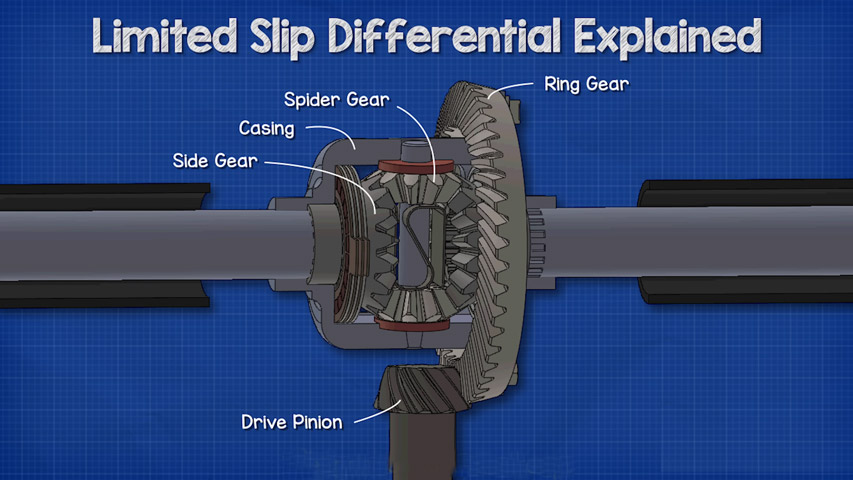
If any of the clutches are pressed well. The frictional force between them causes their integrated and coordinated movement.
In a clutch assembly that is sufficiently pressurized, since the steel plates are pressurized with the casing and the clutches are pressurized with the ring gear, the motion is transferred from the ring gear directly to the casing and then to the corresponding axis.
There is a preloaded spring in the space between the Ring Gear, which applies force to both sides (clutches).
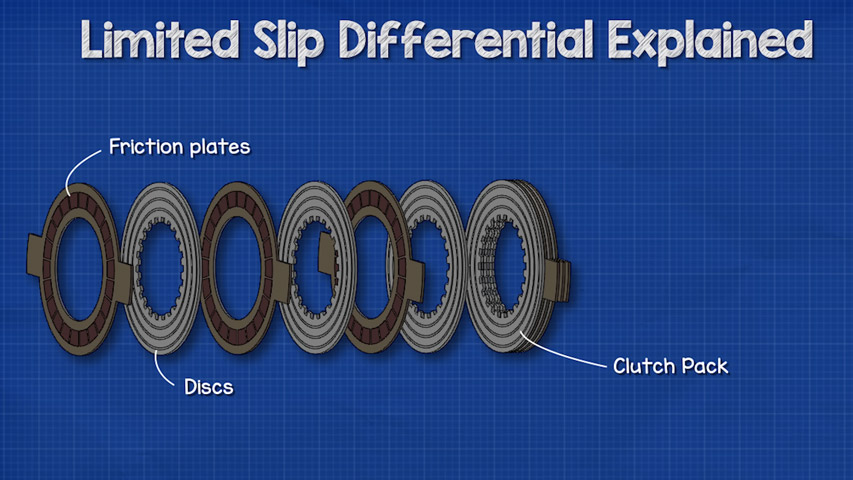
Because the spur gears are round and cone-shaped, which have a special feature. When the torque is transmitted through a bevel gear system, apart from the tangential force, axial forces are also created.
The axial force tries to separate the gears. Because the ring gear and the axis are two separate parts that are connected.
But in the meantime, ring gear has a little possibility of axial movement. Therefore, during the transmission of high torque, a separating pressure force (Fsep) is transferred to the clutches in a large amount by means of a combination of Ring gears and Idlers.
This force puts pressure and locks the set of clutches to the shell wall.
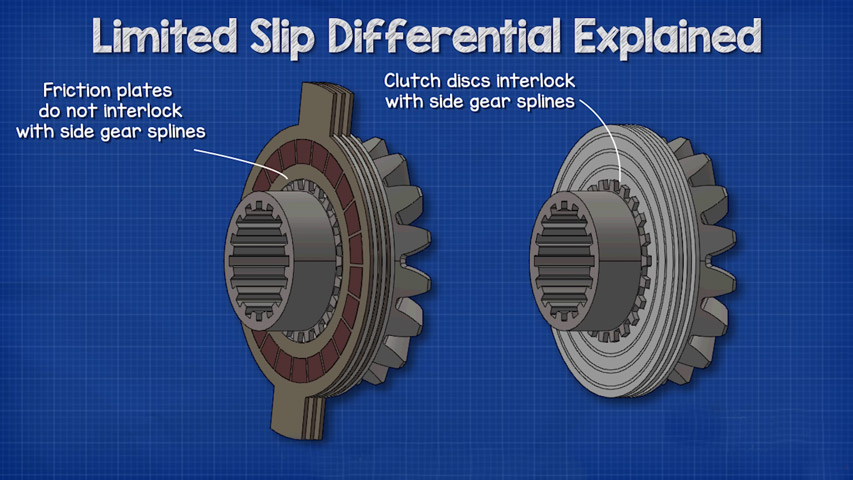
Now, with a more general look at the car, it was said in the first part that a wheel on a slippery surface receives more torque.
Therefore, the pressure force created in separate bevel gears will be high on the other side as well. Therefore, the clutches on the side of the wheel with high friction are tightly compressed and engaged.
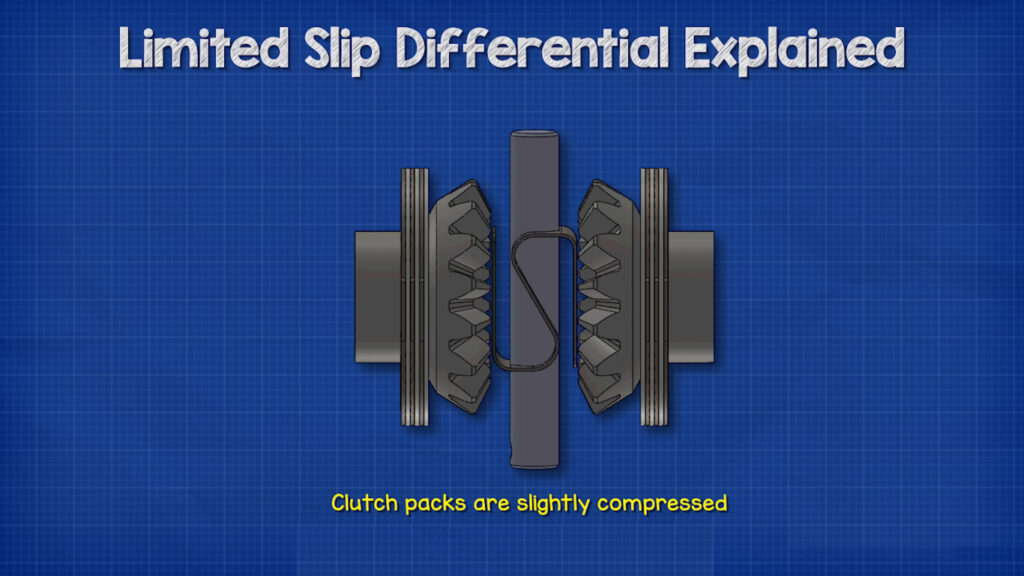
Power transfer in Limited Slip Differential
Now, with a more general look at the car, it was said in the first part that a wheel on a slippery surface receives more torque.
Therefore, the pressure force created in separate bevel gears will be high on the other side as well. Therefore, the clutches on the side of the wheel with high friction are tightly compressed and engaged. In this case, the power is transferred directly to the axis with higher friction through the differential casing with the help of clutches.
In this way, the vehicle will be able to solve the friction problem
What is Limited Slip Differential Problem ?
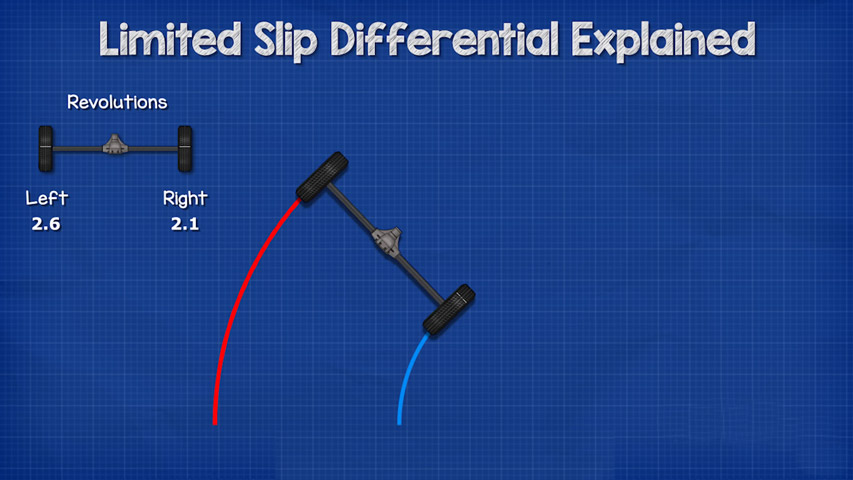
Although the limited slip differential works well on different surfaces, it has problems when cornering.
In this case, the pressure force that is created separately in the bevel gear will not be much.
Therefore, the plates in the clutch plate will easily overcome the frictional resistance and will be able to slide on each other.
Therefore, the left and right wheels can have different speeds, just like a normal differential.
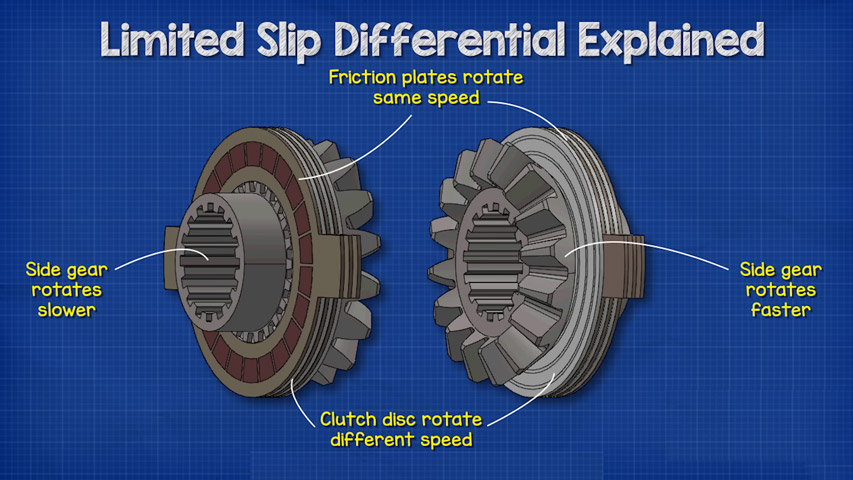
Types of Limited Slip Differential
Apart from the mentioned system, you can see four other different types of limited slip differential :
Clutch Type ( Pressure ring based) | Cone Differential | Hydraulic Locking Type | Torsen
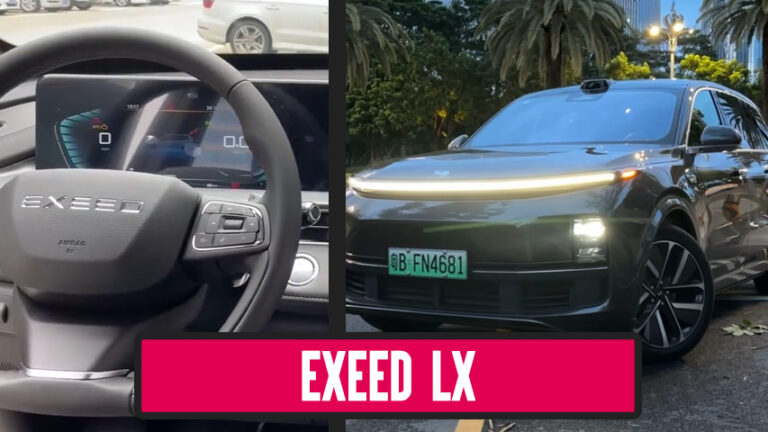
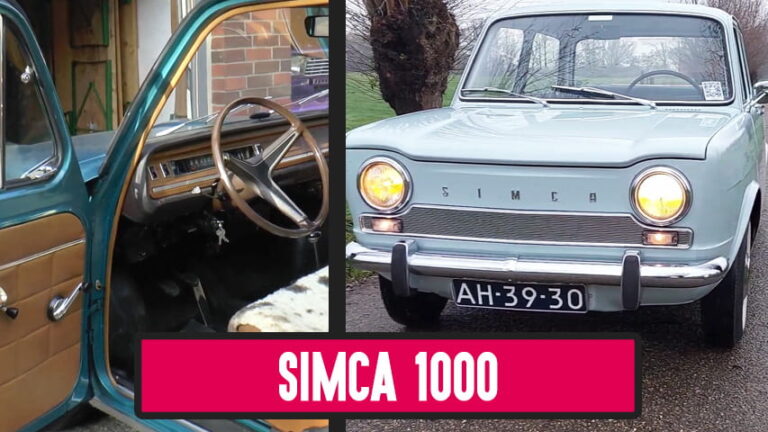
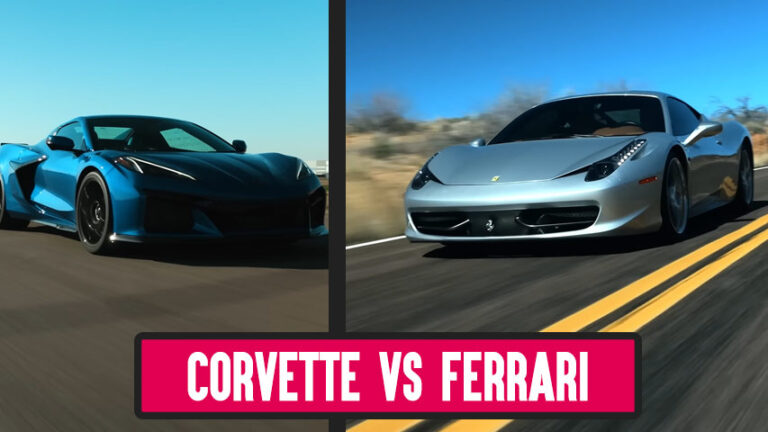
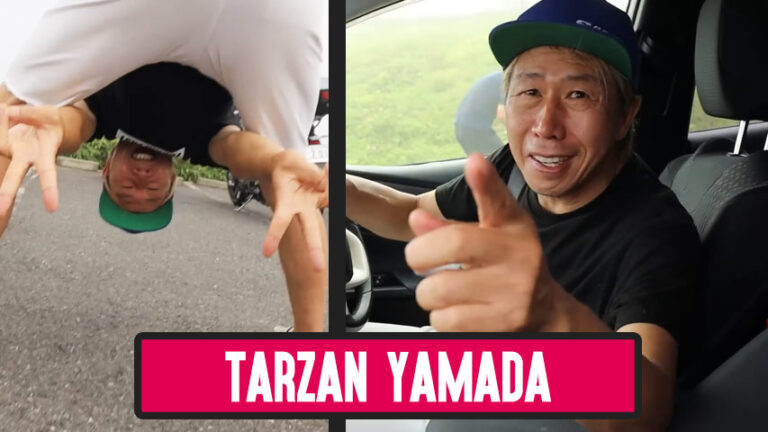
1 thought on “What is limited slip differential ? How it Works ?”